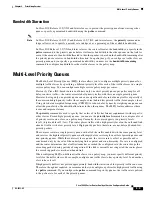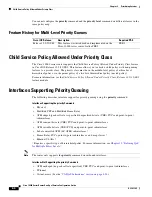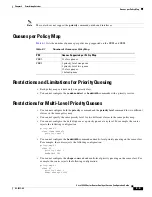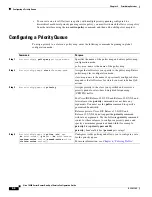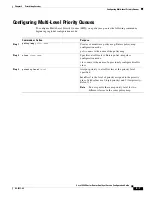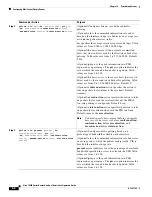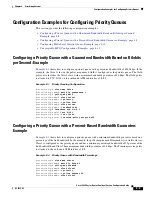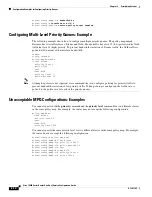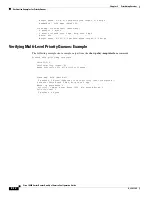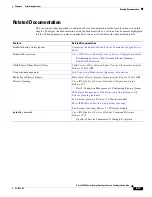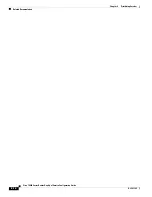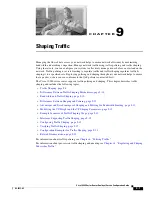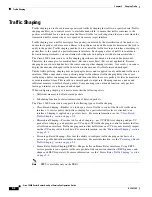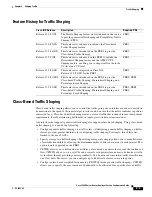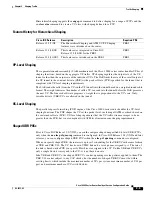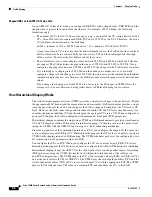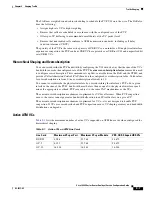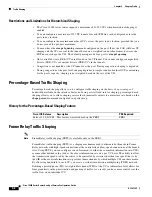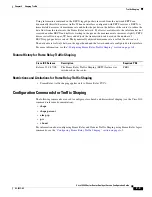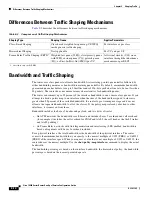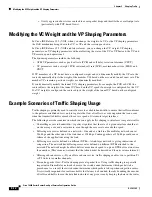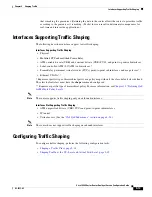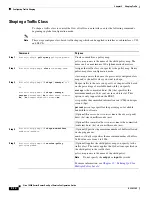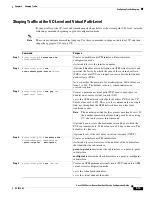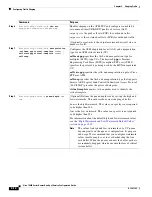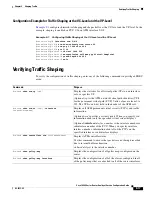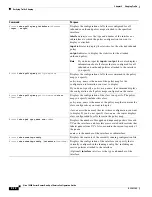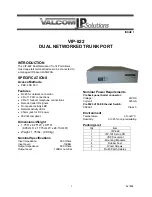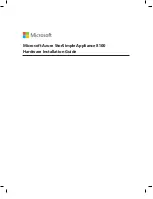
9-3
Cisco 10000 Series Router Quality of Service Configuration Guide
OL-7433-09
Chapter 9 Shaping Traffic
Traffic Shaping
Feature History for Traffic Shaping
Class-Based Traffic Shaping
Class-based traffic shaping allows you to control the traffic going out an interface in order to match its
transmission to the speed of the remote target interface and to ensure that the traffic conforms to policies
contracted for it. Class-based traffic shaping creates a class of traffic that is shaped to meet downstream
requirements, thereby eliminating bottlenecks in topologies with data-rate mismatches.
Any interface that supports generic traffic shaping also supports class-based shaping. Using class-based
traffic shaping, you can do the following:
•
Configure generic traffic shaping on a traffic class—Configuring generic traffic shaping on traffic
classes provides greater flexibility for configuring traffic shaping. Previously, this ability was
limited to the use of ACLs.
•
Specify average rate traffic shaping—Specifying average rate shaping allows you to make better use
of available bandwidth by allowing the maximum number of bits to be sent out in each interval. This
option is only supported on the PRE3.
•
CBWFQ allows you to define what constitutes a class based on criteria that exceed the confines of
flow. CBWFQ allows you to use ACLs and protocols or input interface names to define how traffic
is classified, thereby providing coarser granularity. You do not need to maintain traffic classification
on a flow basis. Moreover, you can configure up to 64 discrete classes in a service policy.
•
Configure class-based weighted fair queueing (CBWFQ) inside generic traffic shaping—CBWFQ
allows you to specify the exact amount of bandwidth to be allocated for a specific class of traffic.
Cisco IOS Release
Description
Required PRE
Release 12.0(17)SL
The Traffic Shaping feature was introduced on the router
to provide generic traffic shaping and Frame Relay Traffic
Shaping (FRTS).
PRE1
Release 12.0(25)SX
This feature was enhanced to include the Class-based
Traffic Shaping feature.
PRE1
Release 12.2(16)BX
This feature was introduced on the PRE2 to provide
Class-based Traffic Shaping.
PRE2
Release 12.3(7)XI
This feature was enhanced on the PRE2 to include the
Hierarchical Shaping feature and the ATM VC/VP
Shaping feature, enabling you to shape traffic at both the
VC-level and VP-level.
PRE2
Release 12.2(28)SB
This feature was integrated in Cisco IOS
Release 12.2(28)SB for the PRE2.
PRE2
Release 12.2(31)SB2
This feature was introduced on the PRE3 to provide
Class-based Traffic Shaping, Hierarchical Shaping, and
Percentage-based Shaping.
PRE2, PRE3
Release 12.2(33)SB
This feature was introduced on the PRE4 to provide
Class-based Traffic Shaping, Hierarchical Shaping, and
Percentage-based Shaping.
PRE2, PRE3,
PRE4

